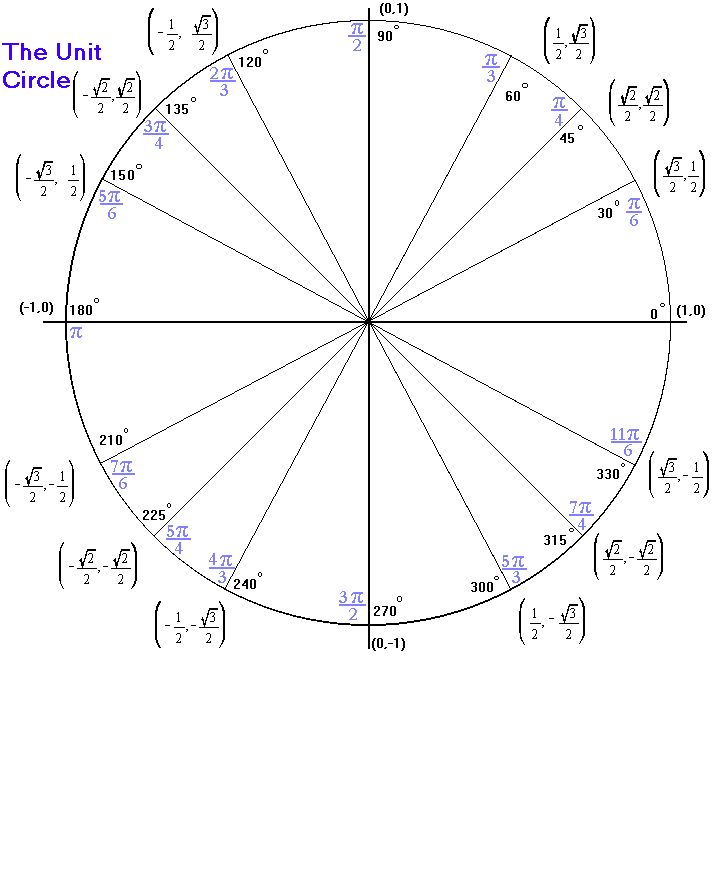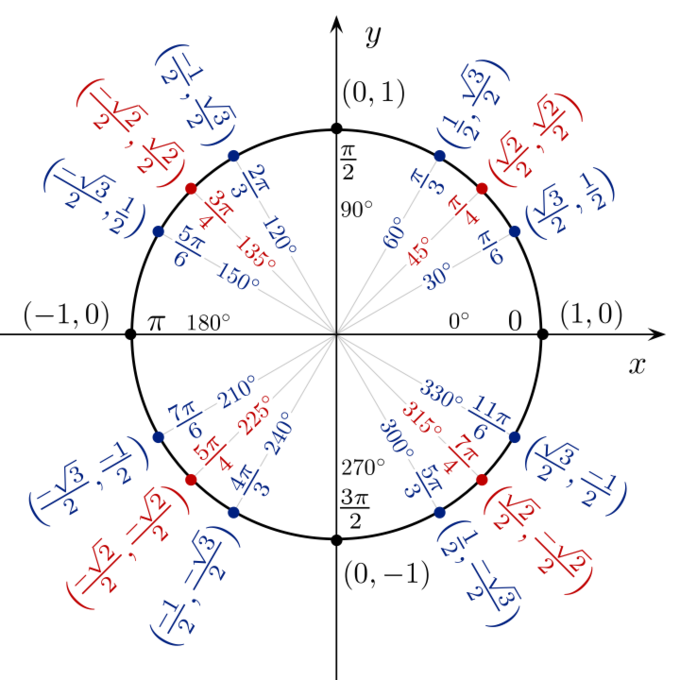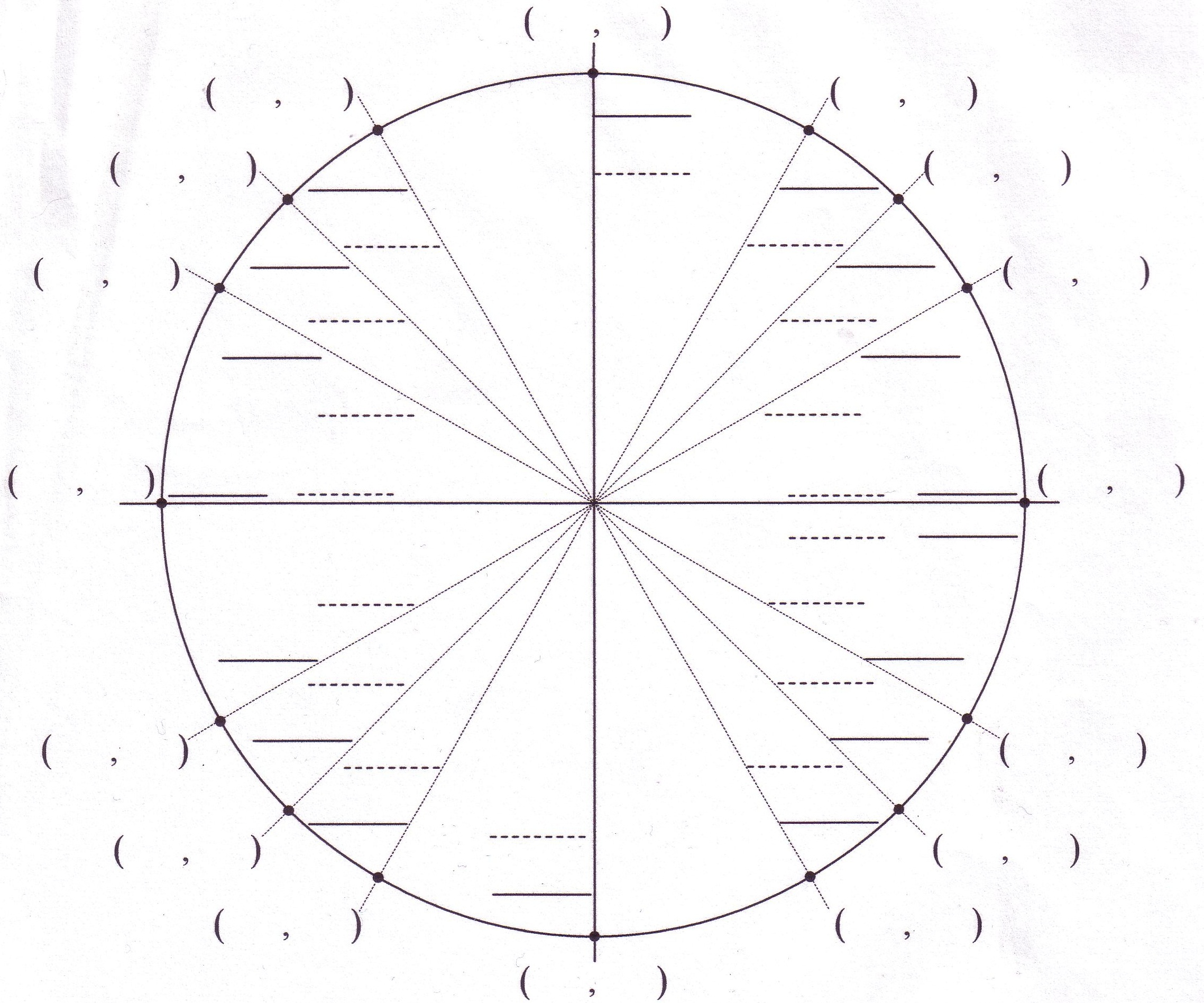

Tan θ has no value at θ = and at, or at −, which is coterminal. Where does x = 0? When the angle terminates on the y-axis. Wherever x = 0, tan θ will have no value. Therefore, wherever a trigonometric function has a denominator - x or y - equal to 0, at that quadrantal angle the function will have no value. Now, it is a fact of arithmetic that there is no number with denominator 0. On the x-axis, y = 0.ĭ) When an angle terminates on the y-axis, what is the value of theĬ) x-coördinate? 0. G) cot θ will have the same sign as which other function?Ī quadrantal angle is an angle that terminates on the x- or y-axis.Ī) What are the quadrantal angles in degrees?Ġ°, 90°, 180°, 270° and angles coterminal with them.ī) What are the quadrantal angles in radians?Ĭ) When an angle terminates on the x-axis, what is the value of theĬ) y-coördinate? 0. x and y will have opposite signs.Į) csc θ will have the same sign as which other function?į) sec θ will have the same sign as which other function? x and y will have the same signs.ĭ) In which quadrants will the algebraic sign of tan θ be negative? Evaluate the six functions of θ.Ī) The algebraic sign of sin θ will always be the sign of whichĪ) coördinate? y, because sin θ = y/ r, and r is always positive.Ī) Therefore, in which quadrants will sin θ - y - be positive? I and II.Ī) In which quadrants will sin θ be negative? III and IV.ī) The algebraic sign of cos θ will always be the sign of whichī) coördinate? x, because cos θ = x/ r, and again, r is alwaysĪ) Therefore, in which quadrants will cos θ - x - be positive? I and IV.Ī) In which quadrants will cos θ be negative? II and III.Ĭ) In which quadrants will the algebraic sign of tan θ ( y/ x) be positive? A straight line from the origin sweeps out an angle θ, and it terminates at the point (3, −4). A straight line inserted at the origin terminates at the point (3, 2) as it sweeps out an angle θ in standard position. The trigonometric functions in fact depend only on the angle θ - and it is for that reason we say that they are functions of θ.Įxample 1. Therefore, we may choose any radius we please. And similarly for the remaining functions. Sin θ - opposite over hypotenuse - does not depend on the length of the radius. Say that AB, AC are two different radii. But triangles ABD, ACE are similar. The functions are defined as the ratios of the sides, not their lengths. To cover the answer again, click "Refresh" ("Reload"). To see the answer, pass your mouse over the colored area. Will a function of θ depend on the length of r? It is in terms of the coördinates ( x, y) of the endpoint of a distance r from the origin.īut before we give an example, consider this question: In this way we extend the meaning of the trigonometric functions to angles that terminate in any quadrant. The right-triangle definitions of the six trigonometric functions follow. Those coördinates define a right triangle. In that quadrant,Ī radius r will terminate at a point ( x, y).


We will take our cue from the first quadrant. The question is: How shall we now define the six trigonometric functions of θ? Let a radius of length r sweep out an angle θ in standard position, and let its endpoint have coördinates ( x, y).

It is necessary therefore to have angles of any size, and to extend to them the meanings of the trigonometric functions. It becomes the mathematical description of things that rotate or vibrate, such as light, sound, the paths of planets about the sun or satellites about the earth. As trigonometry is actually used in calculus and physics, it is not about solving triangles. This right triangle is used to apply trigonometric relations.The unit circle - Topics in trigonometryĪ NALYTIC TRIGONOMETRY is an extension of right triangle trigonometry. The right triangle has leg lengths that are equal to the absolute values of the x x x and y y y coordinates, respectively. Every point on the unit circle corresponds to a right triangle with vertices at the origin and the point on the unit circle.


 0 kommentar(er)
0 kommentar(er)
